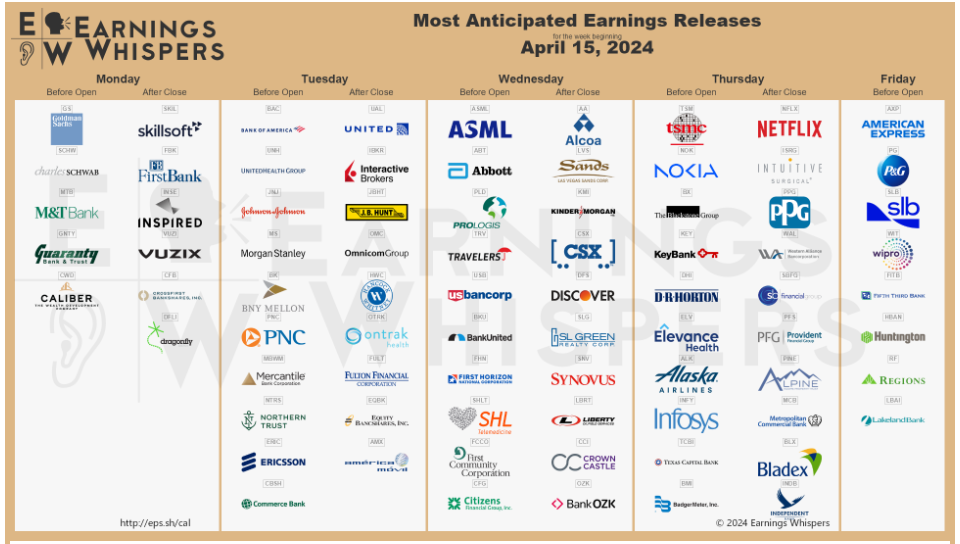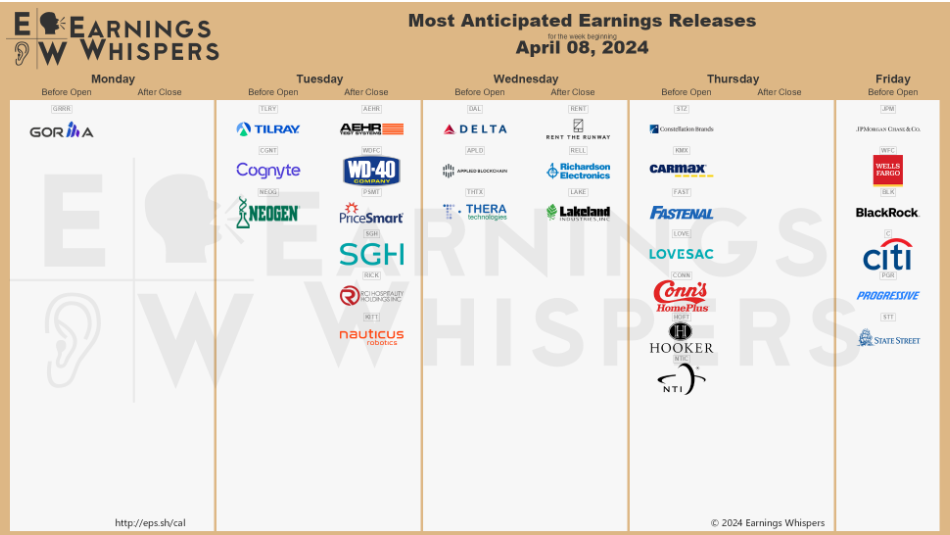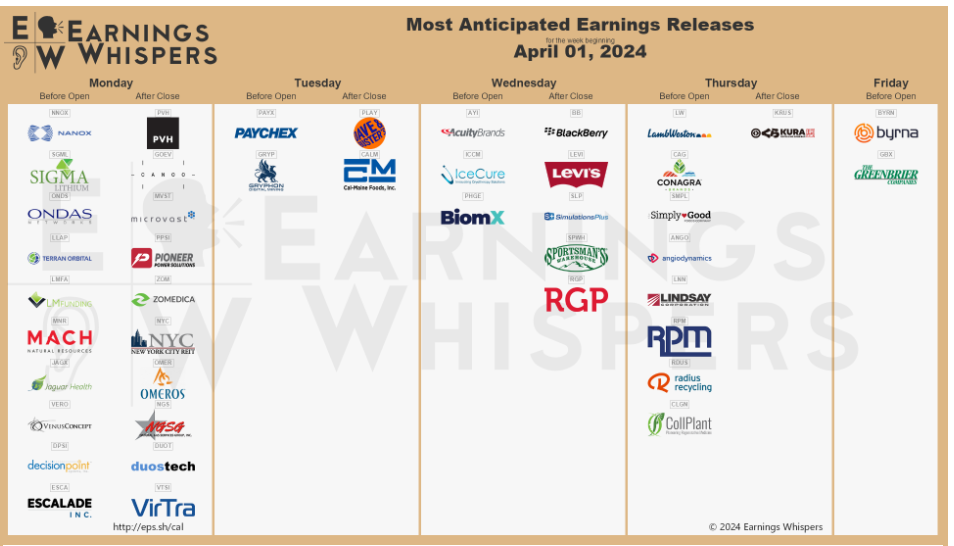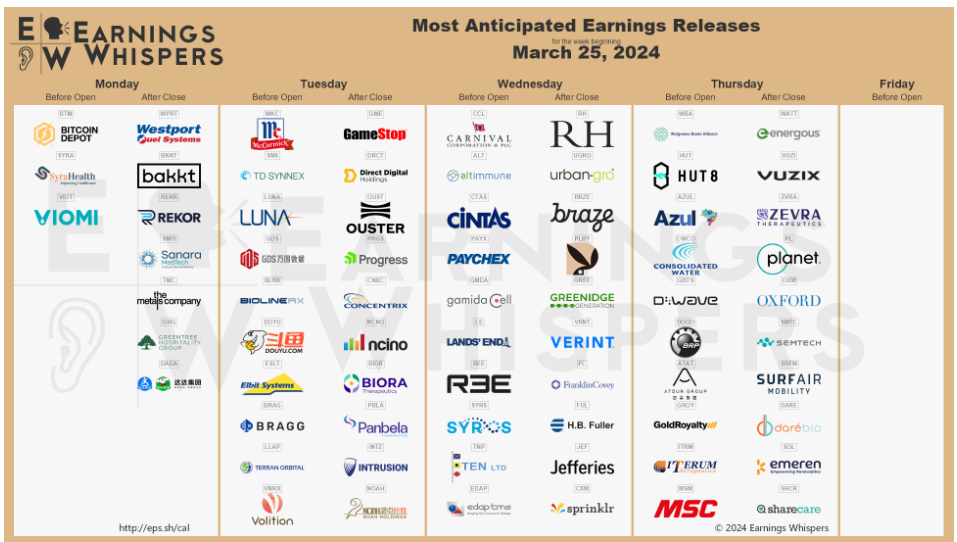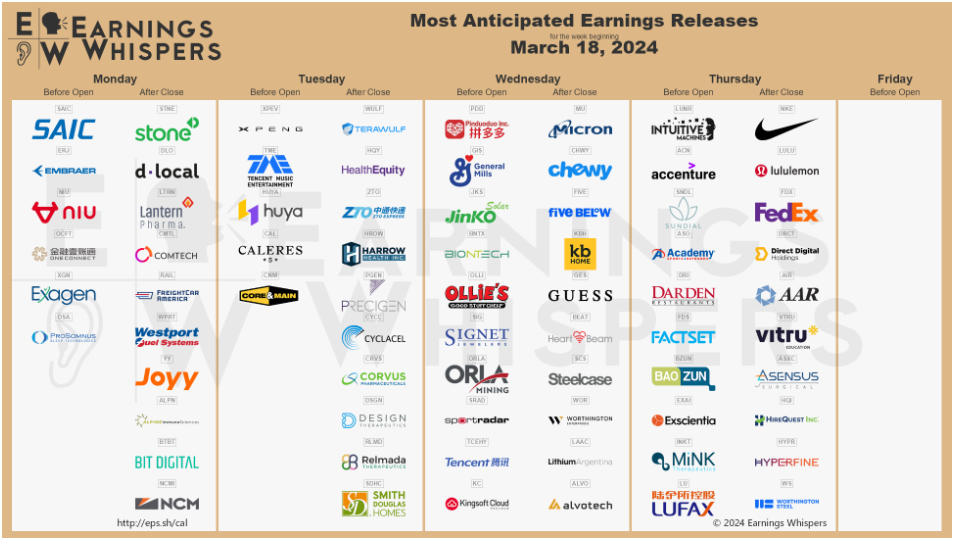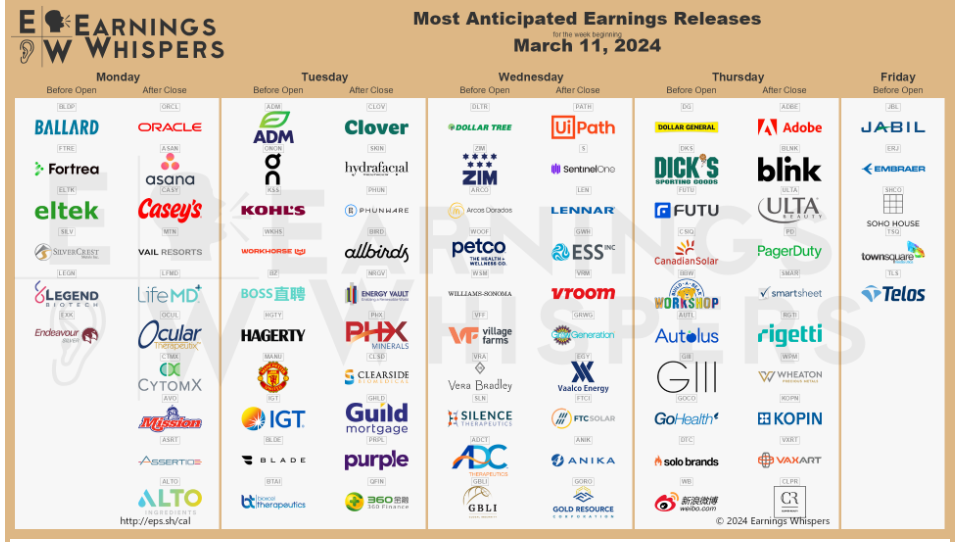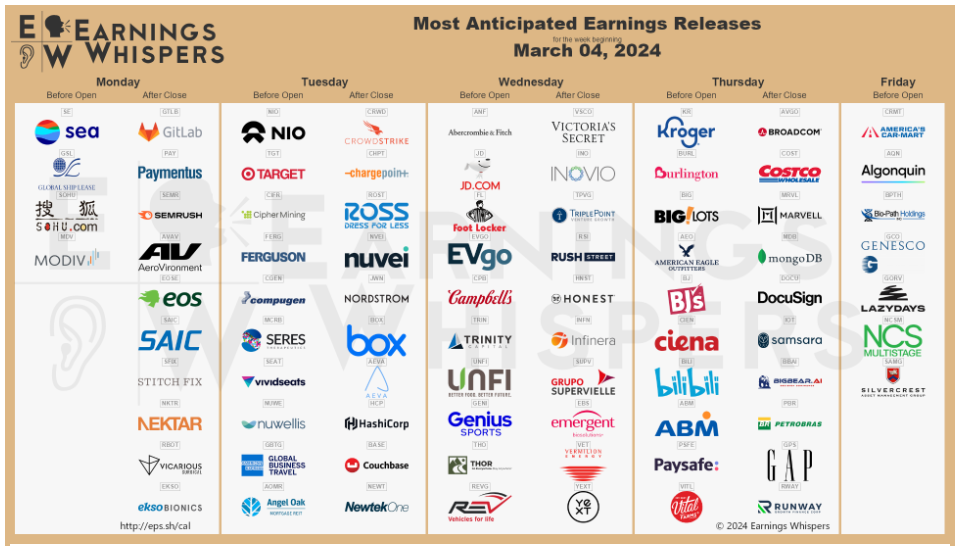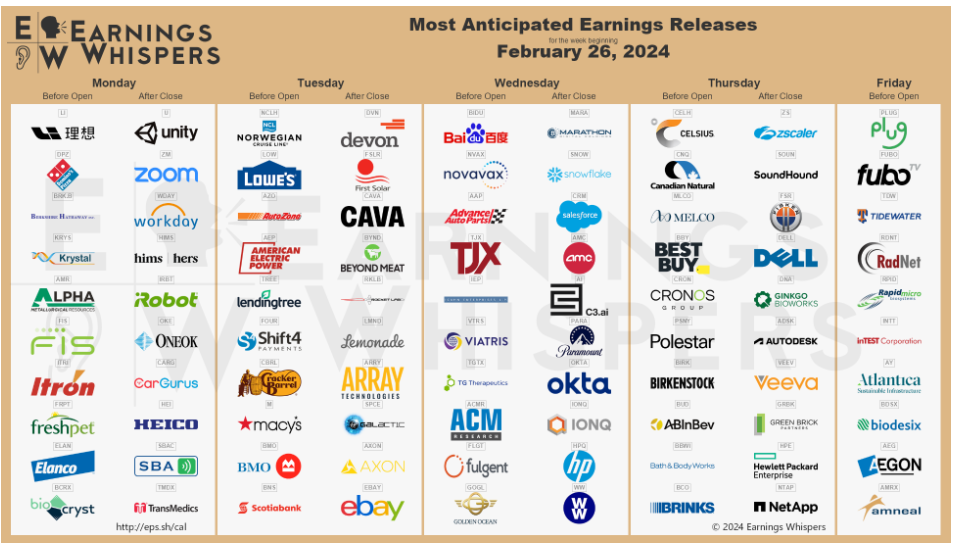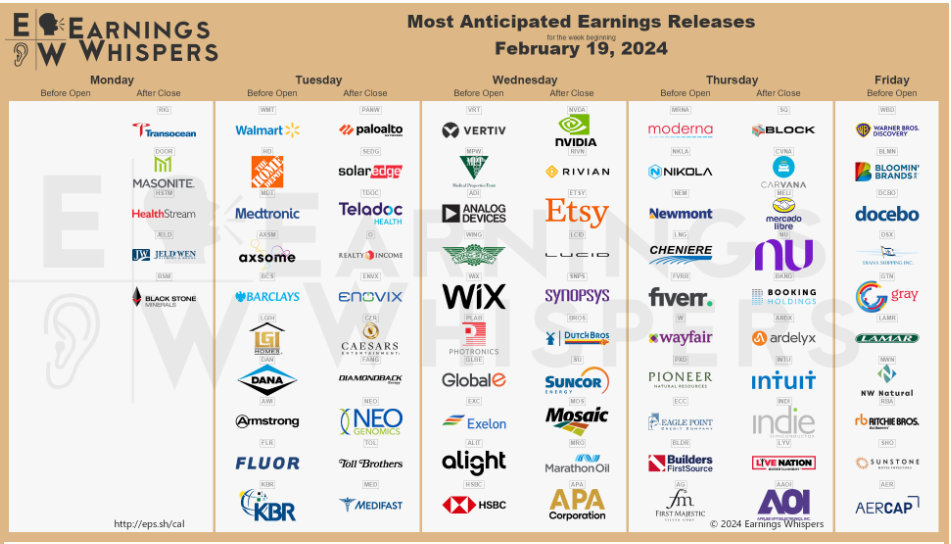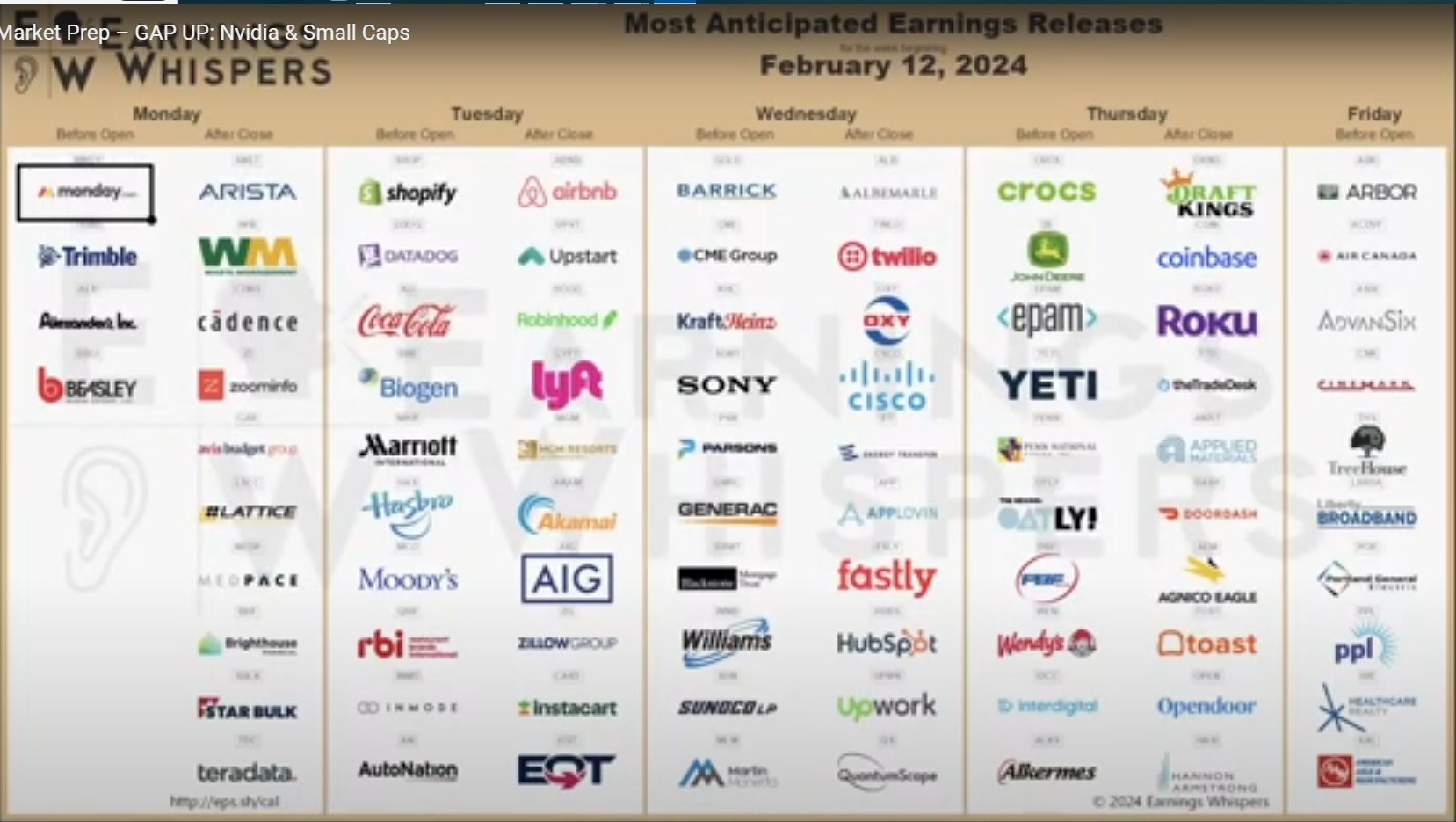Week of April 11, 2024 Weekly Recap & The Week Ahead
Tuesday, April 16th, 2024“You must be shapeless, formless, like water. When you pour water in a cup, it becomes the cup. When you pour water in a bottle, it becomes the bottle. When you pour water in a teapot, it becomes the teapot. Water can drip and it can crash. Become like water my friend.” — Bruce Lee
1. Hot Inflation Report Derails Case for Fed’s June Rate Cut — the consumer-price index, a measure of goods and services prices across the economy, rose 3.5% in March from a year earlier, the Labor Department said Wednesday. That was a touch higher than economists had forecast and a pickup from February’s 3.2%. So-called core prices, which exclude volatile food and energy categories, also rose more than expected on a monthly and annual basis. Wednesday’s report had been hotly anticipated because Fed leaders had been willing to play down stronger-than-anticipated inflation readings in January and February as reflecting potential seasonal quirks. But a third straight month of above-expectations inflation data erodes that story and could lead Fed officials to postpone anticipated rate cuts until July or later.
2. Wholesale Prices Rose 0.2% in March, Less Than Expected — the producer price index rose 0.2% for the month, less than the 0.3% estimate from the Dow Jones consensus and not as much as the 0.6% increase in February, according to a release Thursday from the Labor Department’s Bureau of Labor Statistics. However, on a 12-month basis, the PPI climbed 2.1%, the biggest gain since April 2023, indicating pipeline pressures that could keep inflation elevated. Excluding food and energy, the core PPI also rose 0.2%, meeting expectations. Excluding trade services from the core level, the increase was 0.2% monthly but 2.8% from a year ago.
3. China Tells Telecom Carriers to Phase Out Foreign Chips in Blow to Intel, AMD — Officials earlier this year directed the nation’s largest telecom carriers to phase out foreign processors that are core to their networks by 2027, a move that would hit American chip giants Intel INTC -5.16%decrease; red down pointing triangle and Advanced Micro Devices AMD -4.23%decrease; red down pointing triangle, people familiar with the matter said. The deadline given by China’s Ministry of Industry and Information Technology aims to accelerate efforts by Beijing to halt the use of such core chips in its telecom infrastructure. The regulator ordered state-owned mobile operators to inspect their networks for the prevalence of non-Chinese semiconductors and draft timelines to replace them, the people said.
4. U.S. Moves Warships to Defend Israel in Case of Iranian Attack — The moves by the U.S. that are part of an effort to avoid a wider conflict in the Middle East came after a warning from a person familiar with the matter about the timing and location of the potential Iranian attack. A person briefed by the Iranian leadership, however, said that while plans to attack are being discussed, no final decision has been made. Army Gen. Erik Kurilla, the head of U.S. Central Command, discussed a possible Iranian attack with Israeli Defense Minister Yoav Gallant in Israel on Friday. “We are prepared to defend ourselves on the ground and in the air, in close cooperation with our partners, and we will know how to respond,” Gallant said, according to Israel’s Defense Ministry.
The week ahead — Economic data from Econoday.com:
